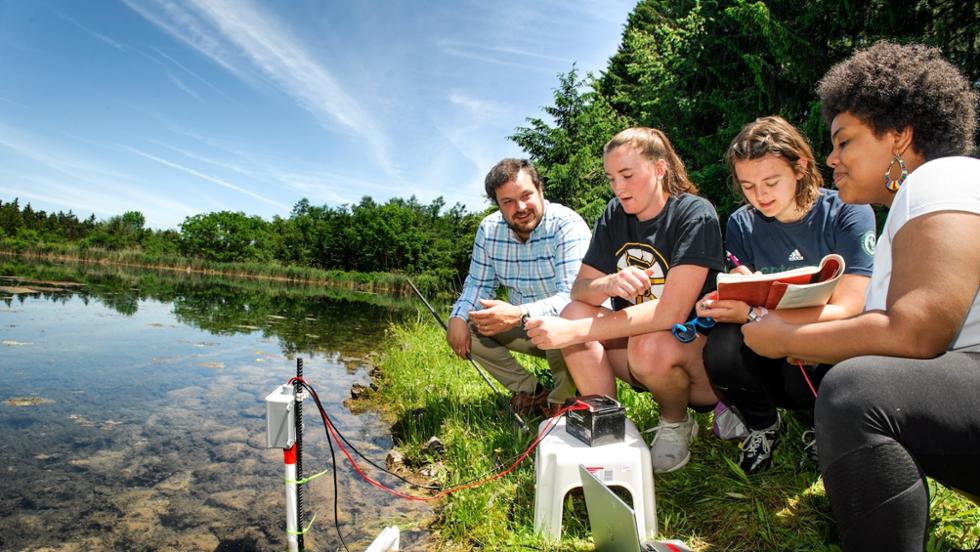
While scientists know that methane is a powerful greenhouse gas that contributes to the climate crisis, there is still uncertainty surrounding where all the methane in the atmosphere comes from. This summer Emely Chacon ’22, Lucille Kline ’22, and Pauline Santry ’21 traversed both wetlands and the village of Clinton to gather data on methane sources, better understand methane production, and find potential answers to the methane mystery.
Hometown: Bronx, NY
High School: Young Women’s
Leadership School of East Harlem
Chacon, Kline, and Santry conducted their climate change research under the guidance of Assistant Professor of Environmental Studies Aaron Strong. Throughout their research, they analyzed carbon dioxide and methane emissions from and carbon storage in lawns, fields reservoirs, and wetlands on campus and in the Clinton area. Chacon said, “The goal of this project was to connect the dots between the amount of methane gas in the atmosphere to their sources. . . . We wanted to learn if wetlands and lawns are a source of methane production in order to account for and mitigate this greenhouse gas.”
Through building methane measurement chambers, collecting soil core samples to measure carbon stored in soils, and using a custom-built sensor system to measure carbon dioxide under water, the group hoped to amass data that could ultimately help understand how much worse climate change will get and to inform the public on ways to reduce greenhouse gas emissions.
Hometown: Clarkson, Mich.
High School: Our Lady of the Lakes High School
For example, in their lawn research, the trio compared the carbon storage of fertilized lawns against unfertilized lawns and mulched lawns against lawns that had not been mulched. The lawn data could then eventually be used to help people make informed, climate smart decisions about their lawn management.
“Climate change research is interesting and relevant for today as we continue to study what human and non-human activities have the most impact on the earth’s atmosphere,” Santry said, describing her interest in the project. The research granted them an introduction to climate fieldwork and, for Chacon and Kline who are entering their sophomore year, a greater introduction to climate studies.
Chacon had not “decided to actively participate in any environmental projects or activities” until she took a first-year course with Strong called “Carbon Footprints.” While she had a prior interest in today’s climate crisis, her experiences at Hamilton helped her apply and deepen her interest.;
Majors: Mathematics and Geosciences
Hometown: Brookline, Mass.
High School: Middlesex School
The group’s summer research serves as the beginning of a larger project in data collection. Looking forward, Santry listed the cumulative nature of the research as one of its most exciting aspects. “I liked the hands-on, outdoor work and how we started a lot of projects that can be continued over the next year or so. It will be interesting to see more data accumulate on the same projects we started this summer.”
Posted August 19, 2019
